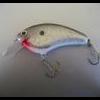
BobP replied to Big Fish Small Pond's topic in Fishing Rods, Reels, Line, and Knots

BobP replied to Big Fish Small Pond's topic in Fishing Rods, Reels, Line, and Knots

BobP replied to Big Fish Small Pond's topic in Fishing Rods, Reels, Line, and Knots

BobP replied to wapsi smallmouth's topic in Fishing Rods, Reels, Line, and Knots

BobP replied to Catch and Grease's topic in Fishing Rods, Reels, Line, and Knots

BobP replied to Crestliner2008's topic in Fishing Rods, Reels, Line, and Knots

BobP replied to Crestliner2008's topic in Fishing Rods, Reels, Line, and Knots

BobP replied to nocellcontracts's topic in Fishing Tackle

BobP replied to rchiuz's topic in Fishing Rods, Reels, Line, and Knots

BobP replied to iceintheveins's topic in Fishing Rods, Reels, Line, and Knots
We have placed cookies on your device to help make this website better. You can adjust your cookie settings, otherwise we'll assume you're okay to continue.

